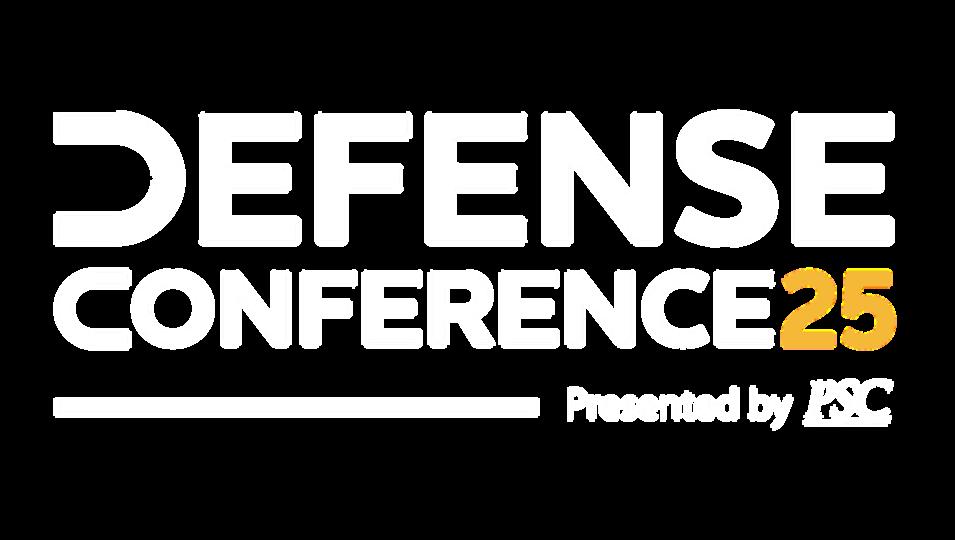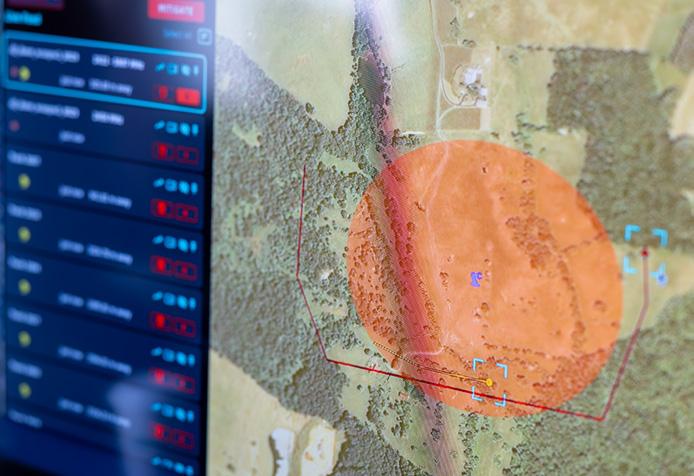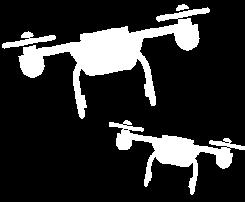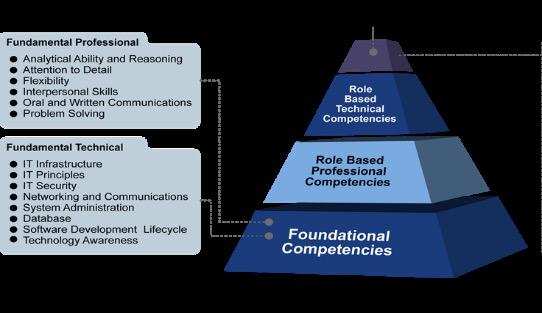

THOUGHT LEADERSHIP COMPENDIUM
Released on October 29, 2025 FEATURED









3 New C-UxS Technology Extends Range, Closes Critical Gap in Homeland Defense

7 Maximizing Productivity in an Era of Constrained Resources Practical Approaches to Meet the Federal Mission
12 Operationalizing High-Energy Lasers: A Strategic Path to Layered Defense
18 DOD ABIS Cloud Migration Enables Faster Biometric Analysis Worldwide

New C-UxS technology extends range, closes critical gap
in
homeland defense.

Alarm bells rang out in 2015 when a recreational quadcopter crashed onto the White House lawn. While it was a harmless incident, it was also a stark reminder of the threat posed by adversaries across the world who use the same small technology to cause such damage as dropping explosives on U.S. forces.
As has been seen in Ukraine, Russia, and the Middle East, unmanned systems (UxS) are easy to modify and operate outside of standard commercial frequencies and deploy commercial telecommunications networks to appear like any other internet of things (IoT) device, making them hard to detect and even harder to stop.
A narrow window to respond
Group 1-5 drones and swarms can reach speeds of more than 300 mph, leaving minimal time for detection, analysis, and engagement. These drones can operate via GPS waypoints, satellite or cellular communications, and even AI-based algorithms, reducing the need for continuous command and control links that are more identifiable.
Detecting and defeating drone swarms has also become more complex. Adversaries increasingly operate outside of commercial frequency bands to avoid detection. Identifying these threats requires full RF spectrum analysis systems from farther distances than previously available.
“To protect our homeland from these smaller yet often just as deadly unmanned threats, we have to increase our response time, which means increasing the distance at which we can defeat these drones and drone swarms,” said Michael Solberg, managing engineer with CACI.
Closing the gap
CACI’s Merlin detects, identifies, and defeats Group 1-5 UxS within seconds from a range of 75+ kilometers, a major leap from other available systems.
“Expanding that range is crucial because it closes the threat window and delivers heightened awareness for operators who now can neutralize an attack even before it’s launched,” Solberg said.



Multi-sensor fusion for UAS tracking and targeting at the earliest point of detection to create decision space.

Nightstalker sense and shoot software enables low collateral EA defeat and rapid engagement of individual UAS in a swarm.

EO/IR camera with slew to cue and AI/ML based UAS detection to positively identify a drone threat.

360-degree radar detection exceeding 10 miles.
Merlin infuses long-range RF, radar, and EO/IR sensing with an extensive database of known UAV radios and flight computers – more than 1,000 unique signals – to deliver extended range threat detection and autonomous or man-in-the-loop response capabilities. CACI’s Nightstalker, an operationally proven C-UxS software framework, combines sensors and effectors from multiple vendors and other existing third-party kinetic capture/entanglement systems and low collateral defeat programs.
Merlin is deployable at multiple classification levels and its software-defined architecture enables rapid integration of new capabilities, including over-the-air updates that stay ahead of tomorrow’s threats.
New drones, new rules
The rules of engagement have changed. Drones enable adversaries to deploy creative ways to gather intelligence and attack military and civilian infrastructure. Traditional defense is no longer enough. Merlin changes that equation. Its extended range gives operators valuable time and awareness to respond with surgical precision, not overt strength. And its modularity is a model for layered, scalable homeland defense across missions and domains.
“Merlin’s versatility may one day be the difference between an attack on our homeland being neutralized or not,” Solberg said. “Whether it’s on our nation’s borders and coasts or an airfield in the middle of the country, Merlin can fill the gaps and deliver capabilities for a true multi-layered national defense system.”
The threat landscape is dynamic. From wire-guided missile tactics in the 1940s to Ukraine’s drone swarm that destroyed 30% of Russia’s nuclear-capable bombers in 2025, unmanned systems are changing faster than ever. That is why CACI is ever vigilant in advancing C-UxS technology to meet the needs of tomorrow’s mission. Our nation’s safety depends on it.
“Providing commanders with increased decision space is critical. They need the time to Sense, Decide and Act with appropriate actions to prevent an adversary drone from achieving its objective. This is absolutely something Merlin is going to help to address,” said Keith Denton, CACI.
| New C-UxS technology extends range, closes critical gap in homeland defense.

Continuous spectrum coverage from 100 MHz to 8 GHz out to 75+ km and above 3500 ft AGL to detect drone data links and non-kinetically defeat threats.



Maximizing Productivity in an Era of Constrained Resources
Practical Approaches to Meet the Federal Mission


Across the federal landscape, agencies face significant change management challenges. Senior leadership transitions bring far-reaching expectations, including shifting missions and priorities, resource reductions, and demands for greater efficiency and productivity. At the same time, the public expects essential services to be delivered seamlessly. To meet these demands, federal leaders must adopt a strategic, adaptable, mission-focused, and workforce-centric approach.
Government contractors can help their federal partners by providing project management expertise coupled with practical, executable solutions. This involves bringing proven tools and strategies to optimize organizational structures, streamline business processes, and strengthen workforce competencies. This article explores effective approaches to assess organizational and workforce capacity, improve operational efficiency, and implement missiondriven strategies needed to achieve goals in a resource-constrained environment.
Strengthen Strategic Planning & Assessment
Effective strategic planning begins with clearly defining and aligning mission and priorities to ensure resources are allocated efficiently. Organizations should communicate goals clearly and focus on high-impact projects that deliver the most value to the mission and the public while streamlining or eliminating lower-priority tasks. Conducting an organizational assessment that leverages analytics to assess program effectiveness and guide resource allocation supports sound strategic planning and decision making. Contractors can apply project management expertise to help federal sponsors design and implement a structured approach to conduct an effective assessment.
1. Define the Purpose and Scope
Clearly define the assessment’s objectives, scope, and key performance indicators to ensure a focused and measurable evaluation.
2. Gather Stakeholder Input
Design surveys, interview guides, and focus groups to engage leadership, employees, and external partners and gather diverse perspectives on organizational performance.
3. Collect and Analyze Data
Use quantitative and qualitative methods to assess performance metrics, workforce engagement, process efficiency, and benchmarking comparisons.
4. Identify Strengths and Weaknesses
Analyze findings to highlight key strengths, inefficiencies, and risks, using tools like SWOT analysis for a comprehensive overview.

5. Develop Actionable Recommendations
Prioritize improvements, create targeted strategies, and align recommendations with agency goals and resources.
6. Implement Changes
Establish a clear action plan with defined objectives, assigned responsibilities, and timelines to ensure successful execution of improvements.
7. Monitor Progress and Adjust
U tilize scheduled reviews, performance metrics, and stakeholder feedback, to assess progress and make strategic adjustments as needed to ensure continued effectiveness and alignment with organizational goals.
Helping agencies, design, facilitate, analyze and implement assessment results is a value-add that goes beyond task delivery—it’s about helping clients operate smarter and more strategically.
Maximizing Productivity in an Era of Constrained Resources
Practical Approaches to Meet the Federal Mission
Enhance Workforce Planning & Talent Assessment
In today’s dynamic environment, shifting mission priorities and evolving business demands require a broad and agile workforce. Effective workforce planning begins with defining strategic priorities and aligning organizational structures, processes, and resources for optimal results. A key component of this planning is assessing workforce capabilities to identify skill gaps, leverage strengths, and develop strategies that enhance alignment with mission needs and overall efficiency. A well-executed workforce assessment considers business and mission objectives, integrates environmental factors, and addresses the entire workforce lifecycle to drive meaningful results.

Contractors can play a valuable role in designing and executing comprehensive skills assessments. The process begins with developing a skills framework based on job roles, industry standards, and mission requirements. These frameworks help establish effective talent assessment strategies to identify organizational and individual capabilities, guide workforce development, and sustain a highly skilled and agile workforce.
The assessment process starts with an occupational analysis, incorporating input from Subject Matter Experts (SMEs). Various federal and private-sector competency frameworks can be leveraged to source relevant skills. The next step is selecting assessment methods and tools to evaluate competency requirements at both the organizational and individual levels. These tools may include self and supervisory proficiency assessments, structured surveys, and 360-degree feedback. Clear instructions should be provided to ensure accuracy and consistency in the assessment process.
Once the assessment is conducted, results must be aggregated, analyzed, and presented in a format that facilitates decision-making. Findings should inform a targeted action plan that identifies key skill gaps, recommends development strategies (such as upskilling or cross-training), and ensures workforce capabilities are better aligned with business needs. Periodic reassessment allows organizations to track progress, refine mitigation strategies, and recognize workforce achievements.


A properly executed talent assessment ensures that workforce capabilities align with organizational priorities, processes, and tools—ultimately strengthening mission readiness and operational effectiveness.
Maximizing Productivity in an Era of Constrained Resources
Practical Approaches to Meet the Federal Mission
Workforce Development: Building Capacity from Within
In a resource-constrained federal environment where hiring is constrained and employees are asked to do more with less, agencies must maximize the capabilities of the workforce through targeted, mission-driven training. However, traditional broad-based training programs can be costly and timeconsuming. To be effective, training must be strategically focused on developing skills that directly support mission objectives while fitting within budgetary and time constraints.
One approach is broadening employees by cross training them to take on new roles or responsibilities, ensuring operational continuity during staffing gaps. This can be accomplished by utilizing the skills assessment discussed above to identify overlapping competencies within teams and structuring training to be hands-on and directly relevant to day-to-day functions. Peer mentoring, job shadowing, and rotational assignments can supplement formal training at little to no cost while allowing employees to gain practical experience in new areas. Agencies can also leverage existing online training platforms, internal subject-matter experts, and knowledge-sharing communities to facilitate skill transfer without requiring significant new investments.

To address leadership shortfalls, agencies should focus on developing internal leadership pipelines via succession and knowledge transfer programs. This starts with identifying high-potential employees and equipping them with essential management skills before critical vacancies arise. Knowledge transfer tools, microlearning modules, leadership coaching, and structured mentorship programs can build expertise and understanding without pulling employees away from their responsibilities for extended periods.
Finally, as the federal mission increasingly relies on emerging technologies, agencies must prioritize upskilling employees in critical areas like artificial intelligence (AI), data analysis, and cybersecurity. Rather than outsourcing all technical expertise, agencies can invest in targeted, role-specific training that allows employees to integrate new technologies into their work. Free or low-cost training resources from federal partners, industry groups, and academic institutions can be leveraged to build these skills. Encouraging participation in interagency working groups, technology pilot projects, and professional development communities can also help employees stay ahead of evolving demands.
Contractors can help align training efforts with mission needs, identify cost-effective learning approaches, and help foster a culture of continuous learning. The goal is to continue to enhance workforce capabilities, improve operational resilience, and ensure long-term mission success, even in the face of resource constraints.

Peer mentoring and job shadowing empower employees to step into new roles and grow talent from within — building critical skills and leadership without added cost.

Maximizing Productivity in an Era of Constrained Resources Practical Approaches to Meet the Federal Mission
Foster Resilient & Engaged Workforce
In today’s turbulent federal environment, employees face growing uncertainty and a deep sense of underappreciation. The “deal” feels increasingly one-sided as they witness sweeping changes to programs and resources, along with the voluntary or forced departure of many colleagues. If leadership fails to address these concerns effectively, the consequences will be severe: declining performance, lower engagement, and a workplace culture that makes attracting and retaining top talent nearly impossible.
An effective communication strategy is the first step in navigating organizational uncertainty, fostering trust, and securing stakeholder buy-in. However, employee awareness, understanding, and acceptance are not achieved through a single message. Instead, they develop through continuous outreach and consistent messaging. A structured, timebased communication approach—starting with senior leadership and cascading through management to individual contributors—creates clarity, alignment, and a smoother transition.
Contractors can play a key role in developing a strategic communication plan by analyzing the current landscape, aligning the strategy with organizational goals, crafting effective messages, leveraging communication channels, and gathering and evaluating stakeholder feedback.
Once effective communication processes are in place, trust can be rebuilt and engagement strengthened through targeted initiatives like Employee Value Propositions (EVP) or similar tools. This begins with understanding what employees value most. For example, as employees transition back to the physical workplace, management can ease the adjustment with solutions such as improved space management and technology, access to fitness facilities, food and childcare options, and flexible work schedules. Simply seeking employee input demonstrates leadership’s commitment to their well-being.
For an EVP to be effective, it must be consistently applied, serving as a clear agreement between leadership and employees. Its impact can be measured through Federal Employee Viewpoint Survey results, as well as specially designed onboarding, sustainment, and departure surveys. Contractors can assist in designing and interpreting these surveys, ensuring engagement efforts are effective and recommending adjustments to address emerging issues and concerns.
Strategic Workforce Management as a Mission Enabler
The reality is that reduced staffing and shifting priorities are not temporary challenges—they are likely to be the norm for federal agencies in the years to come. But with proactive assessment, smart alignment, targeted training, and workforce care, agencies can meet their mission needs—even with fewer people.
For those of us in the government contracting community, helping our clients navigate these challenges isn’t just good partnership it’s essential to the success of the broader federal mission. Whether through supporting assessments, offering upskilling solutions, or helping agencies rethink workforce strategies, we can bring value that goes far beyond headcount.
Ultimately, optimization isn’t about doing more with less—it’s about doing what matters most, with the right people, in the right ways. And when we help our clients achieve that, we all succeed.



Operationalizing
Executive Summary
High-Energy Lasers (HELs) have matured into deployable capabilities that reshape defensive options across domains. HELs deliver speed- of-light engagement, adjustable effects, deep magazines limited by power, and exceptionally low marginal cost per engagement. These attributes make HELs especially effective against proliferating, low-cost threats such as unmanned aerial systems, rockets, artillery, mortars, and fast attack craft while offering a scalable path toward higher-end threats as power and integration improve. HII Mission Technologies is positioned to accelerate HEL transition to operational utility through systems integration, mission engineering, software, test and evaluation, and sustainment. This paper summarizes HEL fundamentals, operational value, acquisition pathways, technical and policy challenges with mitigations, and actionable priorities for government and industry stakeholders.
Strategic Rationale
Threats are shifting toward speed, volume, and affordability, stressing legacy kinetic defenses and increasing lifecycle costs. HELs respond by offering:
• Near-instant engagement that shrinks reaction timelines and increases defended asset survivability.
• Scalable effects enabling graduated responses from sensor denial to destructive defeat.
• Sustainable magazine depth because engagements consume electrical energy rather than expendables.
• Reduced logistics burden by replacing repeated interceptor resupply with power and component sustainment.
Directed energy functions as an architectural enabler that, when integrated with sensors and command-and-control, strengthens layered defense. HII Mission Technologies supports this integration by aligning mission engineering with operational needs and delivering platformaware solutions.
Technical Overview
High-energy lasers generate powerful beams by amplifying light through stimulated emission inside a gain medium positioned between two mirrors. Electrical energy “pumps” the medium, raising electrons to higher energy states. When a passing photon triggers these excited electrons, they release identical photons in a cascading chain reaction. The result is a coherent, intensely focused beam of light that emerges through a partially transparent mirror.
Core subsystems and enabling advances include:
• Laser Source
o Solid-state and fiber lasers provide efficiency, ruggedness, and scalability.
o Coherent beam combining and improved diode pump efficiency increase output in compact footprints.
• Beam Control and Optics
o Adaptive optics, precision beam directors, and real-time beam shaping maintain target coupling despite motion and atmospheric aberrations.
• Power and Thermal Management
o Compact energy storage, power electronics, and hybrid power architectures enable tactical and naval deployments.
o Advanced cooling and thermal routing extend duty cycles and protect components.
• Sensors and Fire Control
o Multi-sensor fusion and high-frame-rate electro-optical/infrared sensors provide detection, discrimination, and continuous tracking.
• Software and Autonomy
o Automated threat triage, software-defined control, and human-in-the-loop engagement authorities accelerate decision loops while retaining oversight.
HII Mission Technologies brings systems, hardware, and software engineering expertise to integrate these subsystems into cohesive, standards-based solutions that accelerate fielding and upgradeability.
Operational Advantages and Mission Effects
HELs deliver operational capabilities that change mission planning and force posture:
• Speed-of-Light Engagement reduces kill-chain latency and enables near-instant response.
• Low Cost-Per-Engagement supports sustained defense against high-volume, low-cost threats.
• Graduated Response allows escalation control through power modulation.
• Deep Magazine yields persistent engagement capacity limited primarily by power availability.
• Reduced Collateral Signature supports operations in urban and maritime environments.
Validated and emerging mission sets:
• Base and Critical Infrastructure Defense providing persistent, affordable protection against UAS, rockets, and mortars.
• Mobile Force Protection with vehicle-mounted HELs for convoy and maneuver security.
• Naval Point Defense protecting ships from small boats, UAS, and short-range projectiles when integrated with ship sensors and point defense suites.
• Airborne and Space Concepts advancing as SWaP and power technologies mature for missile defense and space resiliency.
• Non-Lethal Escalation Control enabling sensor denial and dazzling for maritime interdiction and rules-of- engagement sensitive scenarios.
HII Mission Technologies supports operationalization through scenario-driven mission engineering, integrated T&E, and training packages that accelerate doctrine and tactics development.
Acquisition Patterns and Industry Collaboration
Accelerating HEL fielding requires acquisition practices that favor speed, flexibility, and industry partnership:
• Rapid Prototyping and Experimentation iterate capability quickly through operational experiments and live testing.
• Flexible Contracting Vehicles leverage prototype authorities and OTAs to reduce procurement friction and enable novel team structures.
• Open Modular Architectures allow plug-and-play upgrades and cross-platform reuse to protect investment.
• Mission-Centered Design ties engineering to real- world operational requirements through continuous user feedback.
• Public-Private Partnerships combine government mission sets with industry innovation in optics, power systems, and software.
HII Mission Technologies engages across these acquisition models to reduce integration risk, provide systems engineering, and accelerate transition from prototypes to capability blocks.
Technical and Operational Challenges with Mitigations
HELs present engineering and operational challenges that are tractable with focused investment:
• Power Generation
o Challenge: sustained high output exceeds many platform power budgets.
o Mitigations: hybrid power systems using batteries, fuel cells, and vehicle power; staged engagement profiles; mission-tailored power management.
• Thermal Management
o Challenge: heat limits firing duration and component lifetime.
o Mitigations: integrated thermal routing, advanced heat exchangers, mission pacing, and modular component replacement.
• Atmospheric Effects
o Challenge: turbulence, aerosols, rain, smoke, and dust degrade beam propagation.
o Mitigations: adaptive optics, real-time atmospheric compensation, predictive environmental modeling, and layered employment with kinetic or EW effects.
• Size Weight and Power Constraints
o Challenge: SWaP limits integration, especially for airborne and small ground platforms.
o Mitigations: modular subsystem placement, incremental power-scaling roadmaps, and distributed architectures.
• Target Discrimination and Countermeasures
o Challenge: complex backgrounds and adversary deception hinder discrimination.
o Mitigations: multi-sensor fusion, AI-enabled classification, and integrated ISR for persistent situational awareness.
• Policy Doctrine and Safety
o Challenge: rules-of-engagement, export controls, and safety frameworks require evolution.
o Mitigations: early policy engagement, doctrine pilots, legal reviews integrated with experiments, and robust safety protocols.
• Cybersecurity and Supply Chain Resilience
o Challenge: software-defined systems and critical components create new attack surfaces and production risks.
o Mitigations: secure-by-design architectures, encryption and authentication, supplier diversification, and active cyber defenses.
HII Mission Technologies provides engineering teams and programmatic experience to implement these mitigations while aligning capability development to operational timelines.
Workforce, Test Infrastructure, and Sustainment
HEL adoption requires investments in people, facilities, and industrial capacity:
• Workforce Development
o Establish operator and maintainer pipelines that include simulation, live-fire certification, and predictive health monitoring training.
o Build mission-engineering cadres to translate operational needs into measurable technical requirements.
• Test Ranges and Facilities
o Expand instrumented ranges and environmental simulation labs to validate performance across realistic scenarios and atmospheric conditions.
• Industrial Base Strengthening
o Secure domestic sources for diodes, optics, and power electronics and invest in supplier diversification to reduce production bottlenecks.
• Sustainment Models
o Shift logistics toward power provisioning, modular spares, depot repairs, and condition-based maintenance to maximize availability.
• Safety and Range Management
o Implement laser safety standards and cross-agency coordination to enable routine testing and safer operational use.
HII Mission Technologies supports workforce and sustainment planning by designing training curricula, delivering simulated environments, and establishing T&E protocols that shorten learning curves and reduce lifecycle cost.
Actionable Priorities
To institutionalize HEL capability, government and industry should pursue these priorities now:
1. Accelerate Prototyping and Operational Experiments to capture lessons and refine tactics quickly.
2. Adopt Open, Modular Architectures to enable incremental capability upgrades and cross-platform reuse.
3. Invest in Power and Thermal Innovation to broaden HEL applicability across platform classes.
4. Develop Workforce Pipelines and Test Infrastructure for certification, sustainment, and realistic evaluation.
5. Engage Early on Policy Doctrine and Safety to align operational employment with legal and ethical frameworks.
6. Harden Cybersecurity and Supply Chain to protect mission continuity and program sustainability.
7. Leverage Industry Partnerships with firms like HII Mission Technologies to integrate systems, accelerate T&E, and field sustainable solutions.
HII Mission Technologies stands ready to partner with government and industry to integrate HEL capability into layered defense constructs by providing systems integration, software development, mission engineering, test and evaluation, and sustainment solutions.
Conclusion
High-Energy Lasers are a strategic, near-term capability that deliver persistent, affordable, and
precise defensive effects. The imperative is clear: prototype rapidly, integrate intelligently, and institutionalize HELs within layered defenses to meet evolving threats with agility and costeffectiveness. HII Mission Technologies offers the technical, engineering, and operational experience necessary to turn HEL potential into persistent, mission-ready capabilities. Act now to invest, integrate, and operationalize HELs across domains.
HII is a global, all-domain defense provider. HII’s mission is to deliver the world’s most powerful ships and all-domain solutions in service of the nation, creating the advantage for our customers to protect peace and freedom around the world. As the nation’s largest military shipbuilder, and with a more than 135-year history of advancing U.S. national security, HII delivers critical capabilities extending from ships to unmanned systems, cyber, ISR, AI/ML and synthetic training. Headquartered in Virginia, HII’s workforce is 44,000 strong. For more information, visit: HII.com.
HII Announces Investment in New Integration and Test Facility to Support U.S. Army High -Energy Laser Weapon System
HII announced on Sept. 30, 2025, a capital investment in a new integration, production and test facility to support phase two of the U.S. Army’s Enduring-High Energy Laser (E-HEL) weapon system program. This facility will expand on HII’s existing laser capabilities and will enable assembly and factory acceptance testing of HEL prototypes and subsystems, reinforcing HII’s commitment to delivering next-generation technologies for the future force.
The new site will be equipped with advanced test capabilities for power, thermal and laser performance, and will serve as a critical enabler for validating HEL system readiness prior to field deployment.
For more information, visit: hii.com/news
DOD ABISc
loud migration enables faster
biometric analysisworldwide
The Department of Defense Automated Biometric Identification System (DODABIS) can process 45,000 biometric submissions per day fromwarfighters and agencies worldwide. And during major operations, its surge capacity can handle a staggering 100,000 submissionsin a single day
But thiswasn 't alwaysthe case
To getthere, the authoritative biometric repository thatwarfighters and other intelligence
stakeholders use in collaboration to identify personsof interest globally had to evolve to meet growing user demand while aligning with the DOD Cloud Strategy’s directive of enabling a technological advantage onthe modern battlefield
“When we encounter a potential adversaryin some far-away place, it’simportant that warfighters and other agenciesunderstand whether thatperson has a priorhistory ofthreat activities,” explains JB Burton, a retired Army brigadier general supporting Leidosforce
protectiongrowth.“Are they on a watch list? Have we ever encountered them before?
Providing timely, accurate and complete responsesto DOD ABIS end usersfacilitates faster decision making at the forward edge.”
Now, DODABIS lets warfighters and intelligence teams processsuch information 10-15% faster and for more people than ever before. The new digitallymodernized capacity is thanks to a recently completed migrationof alltest and production environmentsto a highly secure
Impact Level 5 AWS cloud architecture, led by prime contractor Leidos.
Meeting complex mission requirements
DODABIS enables warfighters and other agenciesto accurately identify, target, deny access and detain known or suspected adversariesthey encounter on battlefields, near borders oron
military bases worldwide. The systemprocesses multiple biometric modalities, including fingerprints, palm prints, latent prints, iris scans, facial recognition and, most recently, voice recognition.
With a repository ofover 30 million biometric records accessible by users acrossthe DOD, other federal agencies and international partners, the system needed to transition fromonpremise serversto a more flexible cloud infrastructure. The cloud migrationwould not only
improve security, in alignment with the DOD’ smove to a Zero Trust Architecture, but would
also improve processingspeed and enable seamless scalability to handle surgesin submissions
At the same time, the system needed to maintain its ability to interoperate and share data with other critical systems, including the FBI’ s Next Generation Identificationsystem and the
Department of Homeland Security’sidentificationsystems DODABIS also manages crucial watch lists, updatingthem with informationfrom external agencies and distributingthem to a
multitude offield device typesto ensure thatforces can quickly identifypersonsof interest
wherever they encounterthem.
The goal for the migration: maintain all current capabilitieswhile adding capacity and
streamlining the development ofnew capabilities. To achieve this, Leidosworked closely with the DOD to deliver the value outlined in the cloud business case.
A methodical migration approach
Rather than attempting a risky “big bang ” migration – moving all data and systems atonce –
Leidos took an incremental deployment approach to complete the migration in lessthan a year.
“Big bang approachesusually require significant training and transition periods,” Jerald Willis, deputy product manager of Biometrics attheArmy, explains “If engineers discovertechnical issues, they usually require more complexresolutions.”
As David Jones, program manager for DOD ABIS at Leidos, notes, “We reduced the risk of operational impact, fromthe front-end workstation all the way to the back-end compute environment, by migrating pieces ofthe systemthatwere grouped logically through incremental deployments.”
Startingwith initial planning, design and architecture work, the team then executed each deployment phase, moving infrastructure, applications and data to AWS GovCloud.
“Big bang approaches usually require significant training and transitionperiod.
If engineers discover technical issues, they usually require more complex resolutions.”
Jerald Willis
U.S. Army Deputy Product Manager of Biometrics
Rather than simply “lifting and shifting” the existingsystem, the team made strategic improvements along the way. “We made incremental architectural changeswhere it made sense,” notes Robert Johnston, chief engineer forthe program. “For example, we replaced expensive database systemswith
cloud-native alternatives and implemented AWS’ smanaged Kubernetes service for improved system resilience.”
The upgrades allowed for more rapid deploymentof cloud-native resources for compute, networking and storage, while reducingthe amountofsoftware licensing required forthese hybrid technologies
Enabling global operations
The cloud migration positions DODABIS to betterserve its diverse user community spanning military, federal agency and international partnerorganizations The system can seamlessly handle spikes in demand, ingest large batches of data orimplement a new capability, providing enterprise modernization atpace and scale. Additional computingresources can be provisioned withinminutesrather than the weeksormonthspreviously required forhardware procurement.
“We don 't always have the luxuryof determining where the nextuse case is going to occur,”
Burtonsays.“By operating in the cloud and getting off-premises, we supportthe agility necessary for DOD and other agencies to meettheir global requirements atthe edge.”
Looking ahead, the cloud foundationstreamlinesthe additionof new capabilities such as advanced matching algorithms and expanded modalities. As Jones says,“It means we can channel more resources into new functionality and capabilitiesratherthan just maintaining infrastructure – getting more tools into the handsofwarfighters and interagency partners no matter where the missiontakes them.”


